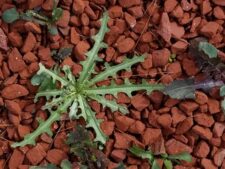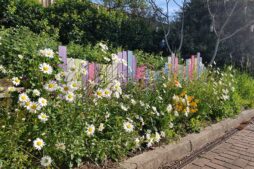Lavender is a beautiful, scented plant that can bring many benefits to your garden as well as for wildlife. In this expert guide, you will learn everything about lavender, including how to grow lavender for optimum results as well as pruning techniques to get the ultimate blossom in your garden.
- Facts about Lavender
- Choosing the Right Lavender
- French and tender lavenders
- Purchasing a Lavender
- When to Plant Lavender
- Where to Plant Lavender
- How to Plant Lavender
- Watering
- Pruning and Training
- What time of year should you prune lavender?
- Where do you cut lavender?
- How to Prune Lavender in its first year
- How to Prune Mature Lavender
- Pruning Lavender in the Spring
- How to Prune Lavender That is Woody
- Pruning Spanish and French Lavender
- How Do You Cut Back Lavender in Winter
- What Happens if You Don’t Prune Lavender?
- Caring for Older Lavender Plants
- Propagating
- Problems with Pruning Lavender
- Grow and Prune Lavender Correctly
- FAQs
- When is the best time to plant lavender?
- How much sunlight does lavender need?
- What type of soil is suitable for growing lavender?
- How often should I water my lavender plants?
- Can lavender be grown in pots or containers?
- How often should I fertilize my lavender?
- When should I prune my lavender plants?
- How much should I prune my lavender plants?
- Can I prune lavender during the growing season?
- What are some tips for drying lavender flowers?
- Sources
Facts about Lavender
| Jan | Feb | Mar | Apr | May | Jun | Jul | Aug | Sep | Oct | Nov | Dec | |
| Plant | ❎ | ❎ | ✅ | ✅ | ✅ | ❎ | ❎ | ❎ | ❎ | ✅ | ✅ | ❎ |
| Flowers | ❎ | ❎ | ❎ | ❎ | ❎ | ❎ | ✅ | ✅ | ✅ | ❎ | ❎ | ❎ |
| Pruning | ❎ | ❎ | ❎ | ❎ | ❎ | ❎ | ❎ | ✅ | ✅ | ❎ | ❎ | ❎ |
If you have never considered adding lavender to your garden before, here are some need-to-know facts about how to grow lavender:
- Easy to grow and care for.
- Lavender is a shrub.
- Made of evergreen foliage, and usually appear in a silvery-grey or grey green.
- Should be planted in the spring in fresh, well-drained soil.
- Drought tolerant.
- Thrives in full sunshine.
- Mainly a hardy plant, but is vulnerable to damp and cold spots.
- Should be pruned annually to remain compact.
- Propagate from cuttings.
- Handy for pollinating wildlife e.g., bees and butterflies.
Do you have an interest in growing plants? Try our useful guide on how to prune hydrangeas.
Choosing the Right Lavender
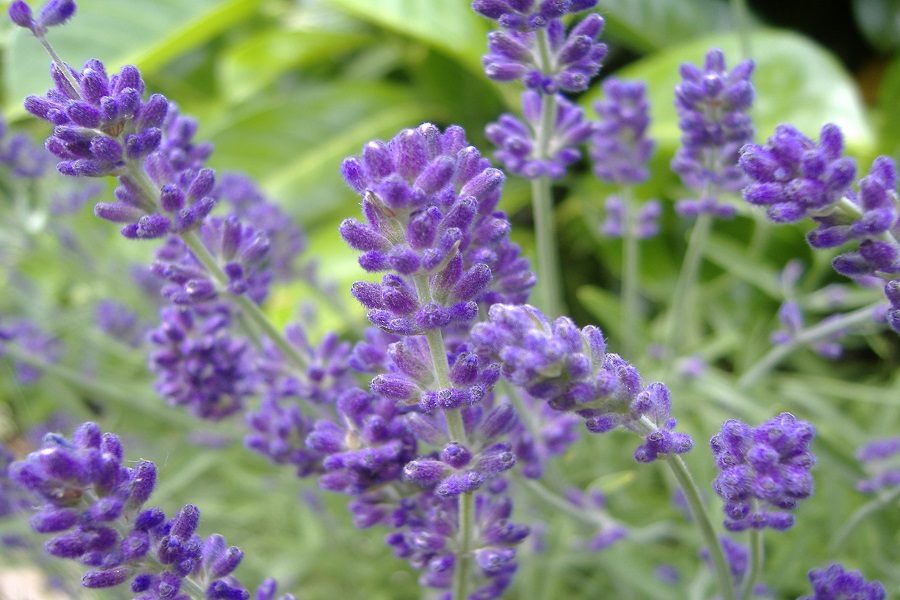
Lavender comes in many varieties, with a range of different colours, smells, plant sizes, and how hardy it can be. Common lavender types include:
Lavandula angustifolia & Lavandula x intermedia
When learning how to grow lavender in the UK, you have to consider the varieties available on the market.
The main lavender variety available in the UK is Lavandula angustifolia[i]. Its hybrid is the Lavandula x intermedia[ii]. Both are tough plants that can be added to borders and containers and because they have hardy properties, can be kept outside in the winter so long as they have free-draining soil.
One of the reasons lavender is so popular is because of its strong scent, but what does lavender smell like[iii]? It is often described as light and fresh, whereas others believe it to be quite herbal with balsamic undertones. Another prominent feature of lavender is the abundance of purple or purple-blue-toned flowers which appear in the summer along with silvery grey leaves. You can also find lavender varieties available in mauve, pink, and white. Overall, lavender can grow to any height between 30cm (1ft) and 90cm (3ft).
However, there is a potential risk to lavender, and that is for the disease Xylella fascidiosa[iv]. Make sure to be aware of this bacterium when purchasing lavender in case it comes to infect your other garden plants.
French and tender lavenders
French lavender[v] (Lavandula stoechas) is also available on the market alongside other hybrid plants. French lavender is part of the offspring of cross-pollinators. Cross-pollination aids in creating strong and healthier lavender offspring, which is known as ‘hybrid vigour.’ Other lavender hybrid varieties that you can grow are:
- Hybrid lavender (L. × chaytoriae)
- Spanish lavenders (L. latifolia, L. pedunculata and L. viridis)
- Tender lavenders: L. canariensis, L. dentata, L. lanata, and L. pinnata; can be found in Portugal, Madeira, and the Canary Islands.
These varieties of lavender are not as hardy as English types, and therefore should not be grown outdoors in the winter since they are more used to warmer growing conditions. Make sure to check the labels of the plant before buying.
Purchasing a Lavender
You can purchase most common varieties of lavender from UK garden centres as well as online stores, particularly in the spring and summer months.
These plants can be sold in containers sized at 9cm (3 ½ inches) or larger so that they are ready for planting straightaway.
Lavender is also available for purchase in:
- Seedings: Growing them from seeds are usually hassle-free and can be transplanted with little disturbance.
- Bedding plants: These are sold as plugs and are available in numerous sizes, but smaller varieties need more aftercare. Pot and grow indoors until they are suitable enough to grow in outdoor conditions. Plugs are also easier and cheaper to purchase, but cultivars are limited.
When to Plant Lavender
When learning how to grow lavender, you need to be aware of when it should be planted. You can plant lavender either in April or May, as this will allow the soil to warm up naturally. This is the period when lavender is easier to purchase from garden centres. Because lavender is vulnerable to the cold, as well as wet soil, avoid growing in the winter.
Where to Plant Lavender
Lavender can be added to flower borders as well as herb gardens, low hedges and border edging. As it is so versatile, it can be grown in containers too. As a Mediterranean plant, lavender craves abundant sunlight and well-draining soil, regardless of its geographic origin. Shady, damp, or extremely cold environments do not sustain its longevity.
This resilient plant thrives in soil that is impoverished, dry, or moderately fertile, including chalky and alkaline compositions. However, it struggles in heavy clay soil or any soil that becomes waterlogged, where excess water suffocates the roots and inhibits their growth due to the lack of air pockets.
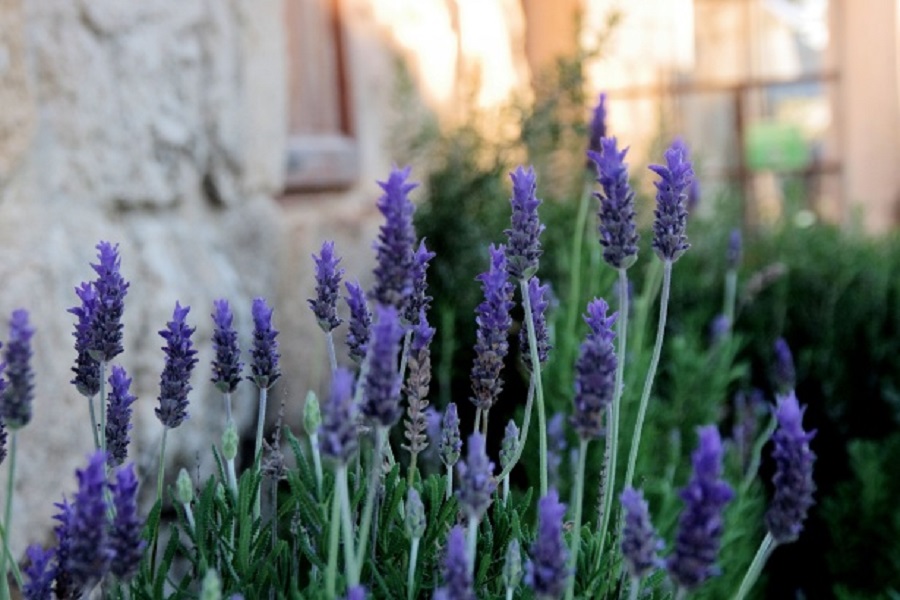
How to Plant Lavender
When learning how to grow lavender, there are numerous steps that you need to take for which method you will choose to grow it in.
Preparing ground soil
Prepare some well-drained soil and dig to get rid of weeds before planting. You can learn more about how to get rid of weeds in the garden before preparing your lavender for potting. Lavender is relatively easy to plant, so follow the instructions below:
- For group plantings, space them approximately 90cm (3ft) apart.
- If creating a hedge, allocate a spacing of 30cm (1ft) between plants, or 45cm (18in) for larger cultivars.
- Once planted, ensure regular watering, particularly during dry spells, throughout the first season.
Planting in containers
Because lavender is also suitable to plant and grow in containers, you can choose a container that is up to 30-40cm (1ft-16in) in diameter.
Use either a multipurpose container, loam-based or one with large drainage holes.
Homemade garden compost, used from decomposed plant waste in a compost bin or heap, and seed/potting compost can be used for lavender to grow in. The former enriches soil fertility, structure, and water retention. The latter is ideal for cultivating seedlings or container plants, with a diverse range of commercially available peat-free options made from ingredients like loam, composted bark, coir, sand, and fertilisers. Alternatively, you can create your own blend.
- Consider incorporating compost such as John Innes No.2 into the mix.
- Enhance drainage by adding a generous amount of coarse grit or perlite (up to 25 percent by volume).
- Ensure the lavender is planted at the same level as it was in its previous container.
- Provide ample watering initially, followed by regular watering (once or twice a week) during hot summer months when the compost shows signs of drying out.
Watering
Watering is essential when knowing how to grow lavender. For instance, newly planted lavender needs to be watered continuously in its first summer of growth.
Once the lavender is fully established, lavender is drought tolerant, meaning that it will not need watering as regularly when planted and grown in the ground, unless there is risk of drought.
During summer months, regulate watering for container grown lavender as these will dry quicker, and there is not as much soil to retain moisture. When in winter, maintain drying conditions for the containers in case of frost. You can shelter them inside a greenhouse to retain heat.
Feeding
Lavender thrives in soil with modest nutrient levels, making additional feeding generally unnecessary.
For optimal growth, plants require a diverse array of nutrients in varying quantities, depending on their specific species and growth stage. While nitrogen, phosphorus, and potassium are the primary nutrients derived from the soil, carbon, oxygen, and hydrogen are absorbed from the air. Essential soil nutrients also include magnesium, calcium, and sulphur. Gardeners can enhance plant development, flowering, and fruiting by applying fertilisers—whether synthetic or naturally derived—to supplement the soil with these vital nutrients.
Deadheading
Another factor to consider when learning how to grow lavender is deadheading. Perform your deadheading techniques on lavender by cutting off any spoilt blooms. This will help them to form better. Leave these in place at the end of the season to provide food for wildlife such as seed-eating birds.
Learn how to create a wonderful garden habitat with our wildlife garden ideas.
Overwintering
As mentioned in this article, lavender is very susceptible to winter frost. Therefore, you need to be aware of the growing conditions for lavender in the winter to prevent overwintering.
Before purchasing lavender, check the plant labels to see the plant’s tolerance to winter. English lavender (Lavandula angustifolia) and its hybrids are known for their hardiness, making them suitable for overwintering outdoors.
Plants grown in containers are more vulnerable to cold temperatures since their roots have less insulation compared to those in the ground. To increase lavender’s chances of survival:
Move containers to sheltered areas during winter to protect them from severe weather conditions.
Provide some protection against winter rain by placing containers beside a wall, at the base, or within a cold frame or greenhouse. Excessive moisture in the compost can make the plants more susceptible to root rots.
When it comes to compost, gardeners have the option of utilising homemade garden compost or seed/potting compost. Garden compost, created from decomposed plant waste in a compost bin or heap, improves soil fertility, structure, and water retention. Seed or potting composts, on the other hand, are specifically designed for growing seedlings or plants in containers. A wide range of commercially available peat-free composts blend various ingredients like loam, composted bark, coir, sand, and fertilisers. However, gardeners also have the flexibility to create their own compost mix.
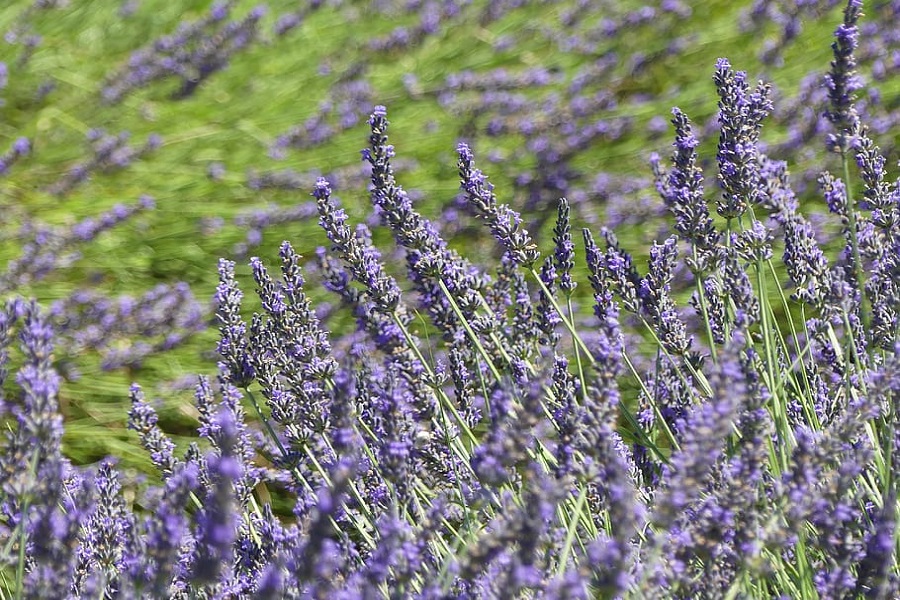
Pruning and Training
Now that you are aware of how to grow lavender, and the right growing conditions for it to thrive in, the next stage of this guide is to discuss when to prune lavender and training it. It is important to know how to prune lavender because if you leave it to grow by itself, it can lead to lavender becoming woody and unsightly. To maintain their appearance, trim them at the end of summer when they have finished flowering.
Remove dead flower stalks by about 2.5cm (1in) for proper leaf growth. Clip the foliage in spring to prevent it becoming untidy or damaged by frost. Do not cut back lavender if it has woody stems as it will not grow properly.
What time of year should you prune lavender?
You should prune lavender twice a year, ensuring that you trim after flowering in the fall and prune in the spring. This may vary depending on the timing that you prune lavender, and you should proceed in two stages.
Avoid heavy pruning of lavender after summer as it may struggle to withstand colder weather. Instead, view fall pruning as an opportunity to harvest lavender for drying and infusing your home with its delightful scent. The ideal time for lavender harvest depends on your intended use. Some purposes require harvesting when the blooms open, while others prefer a slightly faded stage.
If you happen to forget summer pruning, wait until the following spring, especially for less cold-resistant French, Spanish, and Italian lavenders.
When pruning lavender in the spring, ensure new growth has started before proceeding with the pruning process.
Where do you cut lavender?
To promote healthy growth in lavender, precise pruning is crucial. Make sure to cut the plant just above the side branches or leaf nodes, typically marked by green coloration. Avoid cutting too low, as this can lead to the lavender becoming woody.
How to Prune Lavender in its first year
In the first year of lavender growth, a light trim is sufficient. However, to prevent future legginess, it’s crucial to establish a strong foundation for the plants. Pay attention to the appropriate planting time for lavender to ensure optimal plant health.
During the summer, after the lavender has flowered, address the pruning needs of young plants.
At this stage, pruning aims to stimulate new growth and shape the lavender into an attractive mound. If you have grown lavender from seeds or cuttings, pinching out the new growth tips can help encourage bushiness.
In the plant’s first year, there is no need for a spring prune.
Follow these steps for proper pruning:
- Use clean and sharp secateurs to trim each stem by up to one-third, removing the flowers and some green growth.
- Avoid cutting near the woody base of the stem, as it is important to leave ample green on young plants.
- Create an even dome shape by keeping the middle stems longer and gradually shortening them towards the outer edges.
- After pruning, there might be a second bloom. Once it concludes, repeat the pruning process, ensuring it is done well before the arrival of cold fall weather.
How to Prune Mature Lavender
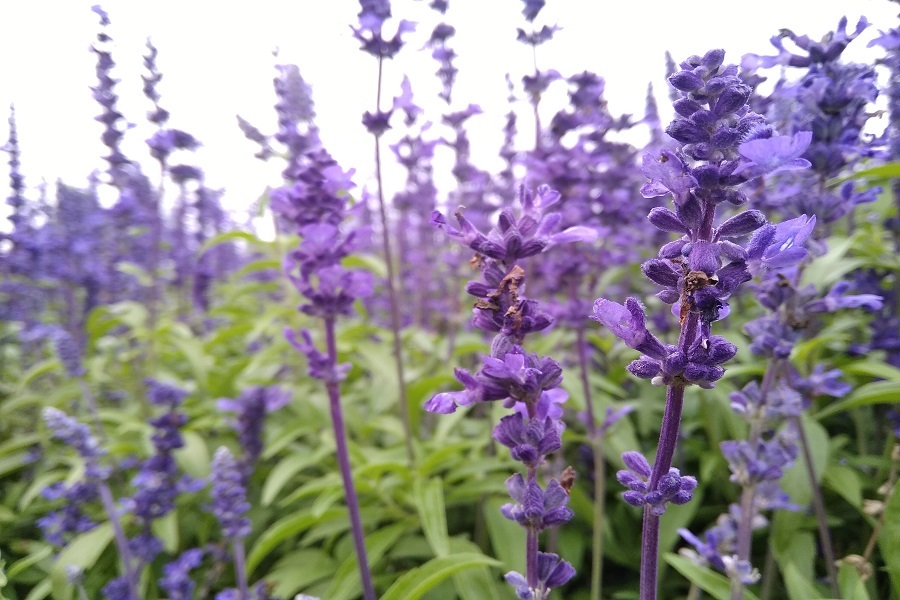
To ensure well-shaped lavender plants, a simple yet thorough pruning routine becomes necessary from their second year of growth.
Begin by giving your lavender a substantial trim during the summer. Prune the plants by approximately one-third, cutting into the foliage to preserve their appealing domed form when in bloom. To do this, grip clusters of stems and use clean, sharp secateurs to snip them off.
Maintain a rounded shape of the lavender whilst pruning, but avoid cutting too close to the woody base of the stems, as this may hinder the plant’s ability to survive winter.
Pruning Lavender in the Spring
When spring comes round, you should ensure to prune your lavender correctly so that the stem does not become wooden. Pruning will also aid in new shoots to grow. The earlier that you prune lavender the quicker the plant will be able to establish itself.
Avoid cutting the stems too deep in old wood.
Take a stem and observe its structure. You’ll notice a woody base beneath the leafy portion. Using clean and sharp secateurs, make cuts around 2-3 inches above the woody base, within the leafy section of the stem. Be careful not to cut into the wood below.
Pruning can be done in batches, tackling handfuls of stems at a time. For hedges, shears might be more convenient to use. Strive to create an appealing rounded shape by slightly shortening the outer stems compared to the inner ones.
Any dead, frost-damaged, or diseased branches should be completely removed during the pruning process.
How to Prune Lavender That is Woody
After a few years of growth, lavender can develop ‘woody’ stems that are not very appealing. Similar to the pruning techniques above, use sharp, clean secateurs to cut 2-3 inches off of the woody base, located in the leafy section of the stem. Be sure not to cut the wood below it.
Pruning can be done in batches, tackling handfuls of stems at a time. For hedges, shears might be more convenient to use. Strive to create an appealing rounded shape by slightly shortening the outer stems compared to the inner ones. Any dead, frost-damaged, or diseased branches should be completely removed during the pruning process.
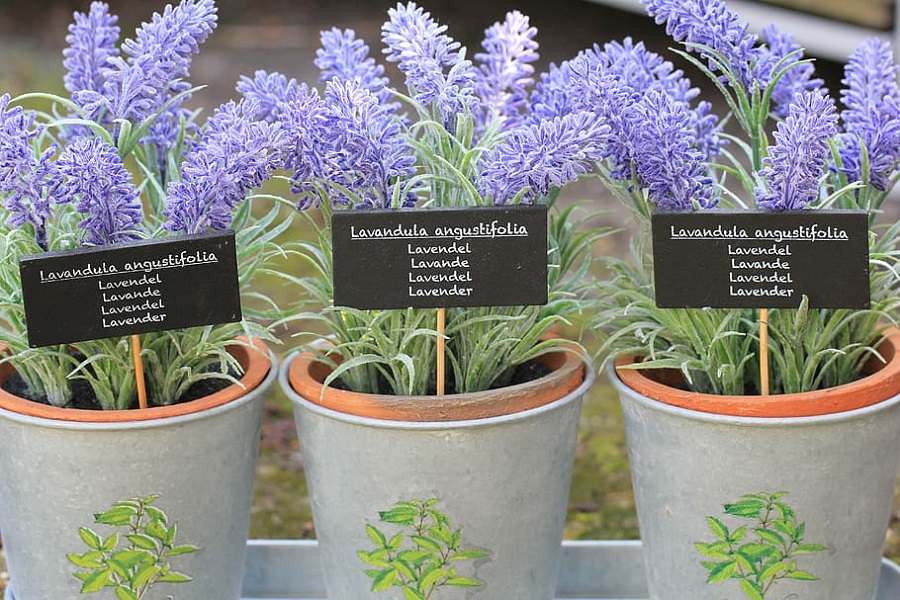
Pruning Spanish and French Lavender
Spanish and French lavender offer captivating variations, showcasing their unique upright flowers resembling graceful butterflies. These blossoms come in delightful shades of purple, pink, and even white.
For these lavender varieties to thrive, they require ample sunlight and attention, although they may not possess the same level of hardiness as English lavender. Nevertheless, their pruning and maintenance needs are equally manageable.
Like other lavender types, it is recommended to trim around one-third of the plant’s growth after the summer flowering period. However, it is crucial not to excessively cut back the stems, as this could expose them to excessive winter frost.
In early spring, a more rigorous pruning session should be undertaken, ensuring caution is exercised to avoid cutting into the dead wood.
Start your own unique garden project by learning how to build a log cabin.
How Do You Cut Back Lavender in Winter
While lavender typically requires pruning during the summer and spring seasons, a third trimming session in the autumn will aid in maintaining a compact and well-defined form, resembling a tight pebble.
By cutting back lavender before winter arrives, you can establish an orderly mound that adds structure to your garden during the coldest months. Being an evergreen shrub, lavender retains its foliage throughout the year.
Allowing faded blooms to remain on the plant can also serve as a source of food for seed-eating birds, making it unnecessary to promptly remove the flowers after they have finished blooming.
Ideally, the initial pruning should be carried out before the conclusion of summer. However, certain hardier lavender varieties can respond positively to a gentle pruning in the autumn, preparing them for the winter season.
Ensure that enough green foliage is retained on the plant to maintain its aesthetic appeal during the colder months.
Make sure to enjoy watching your lavender grow with our luxurious garden furniture sets.
What Happens if You Don’t Prune Lavender?
Failing to prune lavender correctly can result in the plant’s rapid development of elongated, woody stems that lack structural integrity. Consequently, when laden with blossoms, these weakened stems will bend and cause the plant to sprawl outward, revealing a greater extent of aged wood within the plant.

Caring for Older Lavender Plants
Despite regular annual pruning, mature lavender plants tend to become untidy, excessively woody, and lose their desired shape. Due to their rapid growth and quick establishment, it is advisable to consider replacing older lavender plants if you aim to maintain a tidy and well-groomed appearance.
Propagating
You can propagate lavender easily by obtaining softwood or semi-ripe cuttings from young plants during the early to midsummer period. Alternatively, you can take hardwood cuttings after the plant has flowered in late autumn, preferably from new growth shoots. The plants grown from these cuttings will be identical to the original parent plant.
To propagate lavender from seeds, you can collect dry seedheads in late summer, store them over winter, and then sow them in small pots or seed trays filled with seed compost during spring. However, it’s important to note that seeds from cultivated varieties may produce plants that differ from the parent plant.
Problems with Pruning Lavender
Fortunately, pruning, and propagating lavender is hassle-free. If you provide lavender with the right growing conditions, it generally thrives without encountering many issues. Ideally, it should be planted in a sunny location with well-draining soil. However, if the soil is consistently wet or clay-like, it can lead to root rots and the plant’s premature death. To prevent this, it’s advisable to cultivate lavender in a raised bed or container under such conditions.
Clay soil, also referred to as heavy soil, is dense and somewhat sticky due to its fine clay particles. It tends to be heavy and challenging to dig. Additionally, it often drains poorly after rainfall and takes time to warm up in spring. However, it typically contains nutrients and retains water effectively.
It’s important to note that certain types of lavender are not resilient to cold weather and cannot survive winter when left outdoors. To ensure its survival, carefully check the plant labels and choose a hardy lavender variety if you intend to keep it permanently outside.
Lavender faces minimal threats from pests, and any damage they cause is usually only superficial, affecting the appearance of the leaves. Consequently, treatment is generally unnecessary. Some pests that may affect lavender include the rosemary beetle, sage and Ligurian leafhopper, cuckoo spit, and Xylella.
Grow and Prune Lavender Correctly
In conclusion, knowing how to grow lavender as well as pruning can be a rewarding experience when provided with the right conditions. Ensuring a sun-drenched spot with well-draining soil is crucial to prevent issues like root rot. Choosing hardy varieties and taking necessary precautions against pests can help maintain the health and beauty of lavender plants.
FAQs
When is the best time to plant lavender?
The best time to plant lavender is in the spring or fall when the soil is well-drained and the weather is mild. Lavender prefers to be planted when temperatures are not extreme.
How much sunlight does lavender need?
Lavender requires full sun to thrive. It needs at least 6 to 8 hours of direct sunlight per day. Make sure to choose a sunny location for your lavender plants.
What type of soil is suitable for growing lavender?
Lavender prefers well-drained soil with a slightly alkaline pH. Sandy or loamy soil with good drainage is ideal. Avoid heavy clay soils that retain water and may cause the roots to rot.
How often should I water my lavender plants?
Lavender is drought-tolerant and doesn’t like overly wet soil. Water your lavender plants deeply but infrequently. Once established, water them every 2-3 weeks, allowing the soil to dry out between waterings.
Can lavender be grown in pots or containers?
Yes, lavender can be grown in pots or containers, especially if you have limited space or want to control its growth. Ensure the containers have drainage holes and use a well-draining potting mix.
How often should I fertilize my lavender?
Lavender doesn’t require heavy feeding. Apply a slow-release, balanced fertilizer once a year in the spring. Avoid over-fertilizing, as it can lead to excessive foliage growth and reduced flower production.
When should I prune my lavender plants?
Lavender plants should be pruned in the late summer or early fall after they finish flowering. Avoid pruning in the winter or early spring, as it can make the plant more susceptible to cold damage.
How much should I prune my lavender plants?
When pruning lavender, aim to remove about one-third of the plant’s overall size. Trim back the woody stems to just above the green foliage, taking care not to cut into the older wood.
Can I prune lavender during the growing season?
Light pruning or deadheading (removing spent flowers) can be done during the growing season to promote bushier growth and prolong blooming. However, avoid severe pruning during this time.
What are some tips for drying lavender flowers?
To dry lavender flowers, harvest the stems when the buds are in the early stages of opening. Bundle them together and hang them upside down in a dry, well-ventilated area away from direct sunlight.
Sources
[i] Crocus. (n.d.). Lavandula angustifolia ‘Hidcote’. [online] Retrieved from: https://www.crocus.co.uk/plants/_/lavandula-angustifolia-hidcote/classid.4047/ [accessed 23/06/23]
[ii] Jekka’s. (n.d.). Lavender Plants. [online] Retrieved from: https://www.jekkas.com/products/pl03 [accessed 23/06/23]
[iii] Homesick. (n.d.). What Does Lavender Smell Like? [online] Retrieved from: https://homesick.com/blogs/news/what-does-lavender-smell-like#:~:text=Lavender%20has%20a%20very%20distinct,herbal%2C%20balsamic%20undertones%20and%20notes. [accessed 23/06/23]
[iv] Plant Health Portal – Defra. (n.d.). Xylella. [online] Retrieved from: https://planthealthportal.defra.gov.uk/pests-and-diseases/high-profile-pests-and-diseases/xylella/ [accessed 23/06/23]
[v] Hedges Direct. (n.d.). French Lavender (Lavandula stoechas). [online] Retrieved from: https://www.hedgesdirect.co.uk/acatalog/french-lavender-lavandula-stoechas.html [accessed 23/06/23]
Ryan Jenkins is a professional gardener and has been working in the gardening industry for over 25 years. This has allowed Ryan to accumulate a vast wealth of gardening knowledge which he shares on the Sefton Meadows blog.


